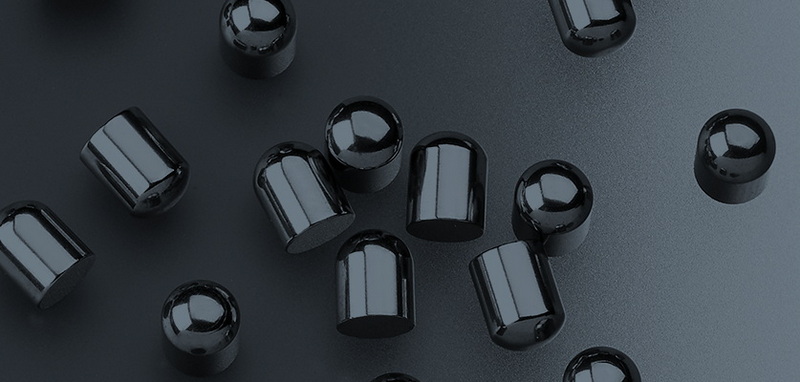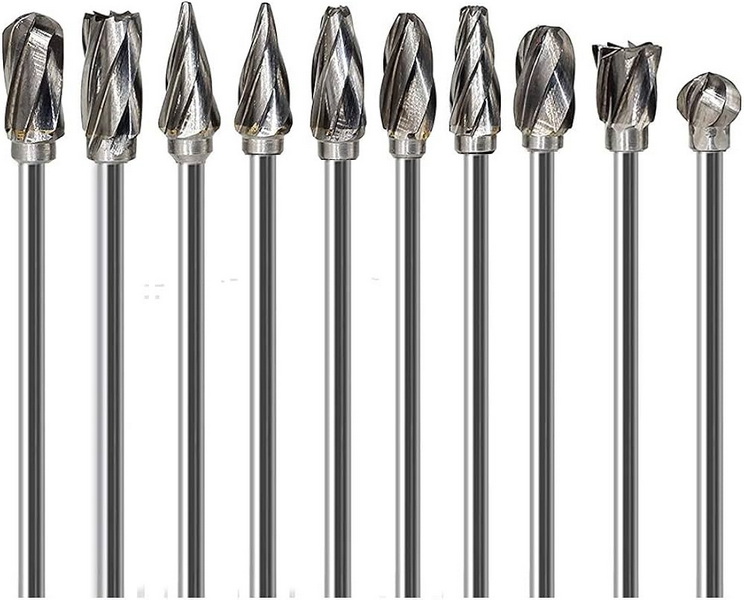Content Menu
● Introduction to Titanium and Tungsten Carbide
>> Titanium
>> Tungsten Carbide
● Durability Comparison
>> Hardness and Wear Resistance
>> Corrosion Resistance
>> High-Temperature Applications
● Applications and Use Cases
>> Aerospace Industry
>> Medical Industry
>> Industrial Applications
● Environmental Impact
● Cost and Production
● Manufacturing Processes
● Future Developments
● Conclusion
● Frequently Asked Questions
>> 1. What is the primary advantage of titanium over tungsten carbide?
>> 2. How does tungsten carbide compare to titanium in terms of hardness?
>> 3. What are the typical applications of tungsten carbide?
>> 4. Why is titanium preferred in aerospace applications?
>> 5. How does the environmental impact of producing titanium compare to tungsten carbide?
● Citations:
When comparing the durability of titanium and tungsten carbide, it's essential to understand the unique properties of each material. Titanium is renowned for its high strength-to-weight ratio and corrosion resistance, making it ideal for aerospace and medical applications. On the other hand, tungsten carbide is celebrated for its exceptional hardness and wear resistance, often used in cutting tools and industrial machinery. This article will delve into the durability aspects of both materials, exploring their differences and applications.

Introduction to Titanium and Tungsten Carbide
Titanium
Titanium is a lightweight metal with a density of approximately 4.5 g/cm³. It is highly corrosion-resistant and has a melting point of about 3,034°F (1,668°C). Titanium's strength-to-weight ratio is superior, making it a staple in industries where weight reduction is crucial, such as aerospace and medical implants.
Titanium Properties:
- Density: 4.5 g/cm³
- Melting Point: 3,034°F (1,668°C)
- Mohs Hardness: 6
- Tensile Strength: 434 MPa
Tungsten Carbide
Tungsten carbide is a compound of tungsten and carbon, known for its extreme hardness, scoring 9 on the Mohs scale. It has a high melting point of about 5,200°F (2,870°C) and a density of 15.6-15.8 g/cm³. Tungsten carbide is widely used in cutting tools, mining equipment, and other heavy-duty machinery due to its exceptional wear resistance.
Tungsten Carbide Properties:
- Density: 15.6-15.8 g/cm³
- Melting Point: 5,200°F (2,870°C)
- Mohs Hardness: 9
- Tensile Strength: 344.8 MPa

Durability Comparison
Hardness and Wear Resistance
Tungsten carbide is significantly harder than titanium, which makes it more resistant to wear and abrasion. This hardness is crucial in applications where tools are subjected to high stress and friction, such as in cutting tools and drill bits. However, titanium's lower hardness is compensated by its superior tensile strength and resistance to fatigue, making it durable in a different context.
Hardness Comparison:
| Material | Mohs Hardness |
| Tungsten Carbide | 9 |
| Titanium | 6 |
Corrosion Resistance
Titanium excels in corrosion resistance, especially in marine environments, due to its ability to form a protective oxide layer on its surface. This property makes titanium ideal for applications where exposure to corrosive substances is common, such as in medical implants and aerospace components.
Corrosion Resistance Comparison:
- Titanium: High corrosion resistance due to its oxide layer.
- Tungsten Carbide: Not typically used for corrosion resistance; its primary advantage is hardness.
High-Temperature Applications
Tungsten carbide has a higher melting point than titanium, making it more suitable for high-temperature environments. However, titanium retains its strength well at elevated temperatures and has a low thermal expansion, which is beneficial in moderate heat conditions.
High-Temperature Performance:
| Material | Melting Point |
| Tungsten Carbide | 5,200°F (2,870°C) |
| Titanium | 3,034°F (1,668°C) |
Applications and Use Cases
Aerospace Industry
In aerospace, titanium is preferred due to its lightweight and high strength-to-weight ratio, which is critical for aircraft components like turbine blades and airframe structures. Tungsten carbide, while not commonly used in aerospace due to its density, can be found in certain high-wear applications.
Aerospace Applications:
- Titanium: Used in aircraft frames, fasteners, and turbine blades.
- Tungsten Carbide: Limited use due to density; more common in industrial machinery.
Medical Industry
Titanium is widely used in medical implants due to its biocompatibility and corrosion resistance. Tungsten carbide is not typically used in medical applications due to its hardness and density, which are not ideal for implantable devices.
Medical Applications:
- Titanium: Commonly used in implants like hip replacements and dental implants.
- Tungsten Carbide: Not commonly used due to its properties.
Industrial Applications
Tungsten carbide is extensively used in industrial settings for cutting tools, drill bits, and wear parts due to its exceptional hardness and wear resistance. Titanium, while not as hard, is used in industrial applications where corrosion resistance is necessary, such as in chemical processing equipment.
Industrial Applications:
- Tungsten Carbide: Used in cutting tools and wear parts.
- Titanium: Used in chemical processing equipment for corrosion resistance.
Environmental Impact
Both materials have environmental considerations in their production processes. Tungsten carbide and titanium require high energy consumption during manufacturing. However, titanium carbide (a related material) may require higher temperatures, potentially leading to a greater environmental impact. Additionally, the extraction of tungsten can have environmental implications, such as soil contamination and water pollution, due to the mining process.
Cost and Production
Tungsten carbide generally has a lower production cost compared to titanium carbide, but titanium itself can be more cost-effective in certain applications due to its moderate pricing and versatile use. The cost of titanium can vary significantly based on the alloy and processing methods used.
Manufacturing Processes
The manufacturing process for both materials involves complex steps. Titanium is often produced through the Kroll process, which involves the reduction of titanium tetrachloride with magnesium. Tungsten carbide is typically produced by sintering tungsten carbide powder with a metal binder, such as cobalt or nickel.
Future Developments
In recent years, there has been a focus on developing new alloys and composites that combine the benefits of both materials. For example, titanium carbide composites can offer improved hardness while maintaining some of titanium's corrosion resistance. Additionally, advancements in 3D printing technology are allowing for more complex geometries and customized parts, potentially expanding the applications of both materials.
Conclusion
In summary, titanium and tungsten carbide serve different purposes based on their unique properties. Titanium is more durable in terms of corrosion resistance and strength-to-weight ratio, making it ideal for aerospace and medical applications. Tungsten carbide, on the other hand, excels in hardness and wear resistance, making it perfect for industrial cutting tools and machinery. The choice between these materials depends on the specific requirements of the application.

Frequently Asked Questions
1. What is the primary advantage of titanium over tungsten carbide?
Titanium offers a superior strength-to-weight ratio and corrosion resistance, making it ideal for lightweight applications where durability is crucial.
2. How does tungsten carbide compare to titanium in terms of hardness?
Tungsten carbide is significantly harder than titanium, scoring 9 on the Mohs scale compared to titanium's 6.
3. What are the typical applications of tungsten carbide?
Tungsten carbide is commonly used in cutting tools, mining equipment, and other heavy-duty machinery due to its exceptional wear resistance.
4. Why is titanium preferred in aerospace applications?
Titanium is preferred in aerospace due to its lightweight and high strength-to-weight ratio, which is critical for reducing weight while maintaining structural integrity.
5. How does the environmental impact of producing titanium compare to tungsten carbide?
Both materials require high energy consumption during production. However, titanium carbide may have a higher environmental impact due to the need for higher temperatures.
Citations:
[1] https://heegermaterials.com/blog/79_tungsten-carbide-vs-titanium-carbide.html
[2] https://pmc.ncbi.nlm.nih.gov/articles/PMC6751502/
[3] https://blog.iqsdirectory.com/tungsten-carbide/
[4] https://www.mdpi.com/2075-4701/12/12/2144
[5] https://www.aemmetal.com/news/tungsten-carbide-vs-titanium.html
[6] https://www.mdpi.com/2075-4701/10/6/705
[7] https://www.justmensrings.com/blogs/justmensrings/what-are-the-differences-between-titanium-and-tungsten
[8] https://pmc.ncbi.nlm.nih.gov/articles/PMC8920912/
















